Automated FOIA redaction software for public schools

Automated FOIA redaction software for public schools
Public schools manage vast amounts of sensitive information, from student records to financial reports and internal communications. While Freedom of Information laws grant the public access to these records, schools must also comply with strict privacy protections, such as the Family Educational Rights and Privacy Act (FERPA). Redactable’s AI-powered redaction software helps public schools meet both FOIA and FERPA requirements by permanently removing sensitive information before records are released.
By streamlining the redaction process, schools can respond to requests faster, maintain compliance with state and federal regulations, and protect student and staff privacy. This ensures greater transparency with the public while safeguarding the confidentiality of individuals.
How public school FOIA requests work
Submitting a FOIA request to a school district or public university typically requires a written request describing the records being sought. Each state has its own timelines and rules for processing requests, but common steps include:
- Receipt and review of request – The school district confirms that the request is valid and identifies which departments hold responsive records.
- Evaluation of exemptions – The school determines what information may be withheld under FOIA or FERPA.
- Assessment of processing fees – Depending on state law, fees may apply for locating, reviewing, and redacting records.
- Response timeline – Schools often must respond within 5–15 business days in many states, though extensions are allowed for large or complex requests.
Even when records are releasable, sensitive data—especially student information—must be redacted before disclosure.
Common FOIA and FERPA exemptions for schools
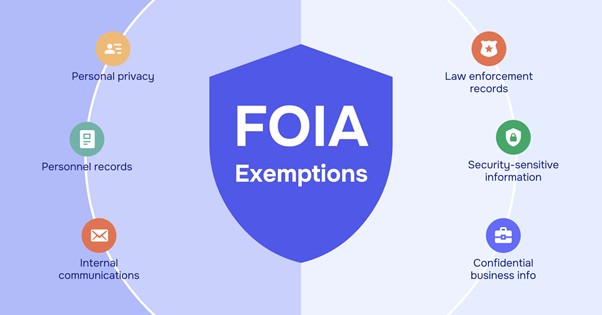
Public schools must carefully balance transparency with privacy protections. Sensitive categories often exempt from disclosure include:
Personally identifiable information (PII): Student names, addresses, grades, disciplinary records, health data, and indirect identifiers (such as birth dates, small class sizes, or unique characteristics).
Law enforcement records: Information from school security or campus police investigations.
Internal communications: Draft policies, internal deliberations, and pre-decisional notes.
Confidential business information: Vendor contracts, proprietary educational software data, or financial arrangements.
Personnel records: Teacher evaluations, HR files, and disciplinary reports, where disclosure would violate privacy rights.
Security-sensitive details: Emergency plans, building security layouts, or cybersecurity measures.
Redactable ensures these categories are consistently and permanently removed before public release.
Permanent redaction vs visual hiding
Traditional redaction methods, such as blacking out text in PDFs or using white boxes, often leave data recoverable. Hidden metadata, transparent layers, and copy-paste vulnerabilities can expose sensitive information.
Redactable completely removes sensitive information, including:
- Text and numbers – all identifiers and PII are irreversibly removed.
- Metadata and hidden layers – preventing recovery from file properties or hidden content.
- Transparent or covered objects – ensures no hidden text remains visible or extractable.
- Embedded images and charts – sensitive visuals are fully removed.
This supports compliance with FOIA and FERPA requirements, eliminating the risk of accidental disclosure.
Interested in learning more?
How to perform FOIA redaction for public schools
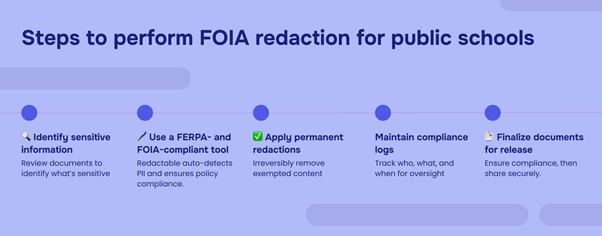
Redactable helps schools manage FOIA requests efficiently while protecting sensitive student, staff, and administrative information. A structured redaction process ensures compliance with both FOIA and FERPA.
Identify sensitive content
Review requested records to locate personally identifiable information (PII) and other protected data, including student information (names, grades, disciplinary records, medical notes, birth dates), staff files (HR records, evaluations), and financial or contractual documents. Consider indirect identifiers and use checklists to reduce errors.
Use a FERPA- and FOIA-compliant tool
Redactable automates detection of PII and other sensitive content, ensuring consistency with school policy and regulations. Staff can verify automated redactions to confirm completeness.
Apply permanent redactions
Remove all traces of sensitive information, including text, metadata, hidden layers, and embedded objects. Permanent redaction prevents accidental disclosure and supports compliance.
Maintain compliance logs
Redactable records who applied each redaction, when, and why. Audit-ready logs support FOIA and FERPA compliance, legal accountability, and improvement of future redactions.
Finalize and release records
Confirm that all sensitive content is removed and redactions meet FOIA and FERPA requirements. Once finalized, documents can be securely shared, maintaining public trust while safeguarding student, staff, and institutional information.
Redactable’s AI FOIA & FERPA redaction software
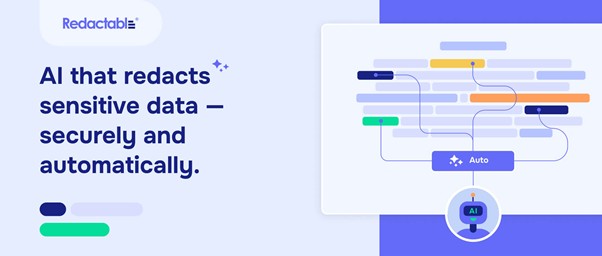
Redactable provides public schools with a secure, efficient solution for managing FOIA requests while supporting FERPA requirements. The software simplifies redaction, protects sensitive student and staff data, and maintains full audit trails.
Key features and benefits:
- Automated detection and removal of personally identifiable information (PII).
- Batch uploads and OCR to process scanned files and large document volumes.
- AI-powered detection for educational, financial, and personnel content.
- Audit-ready logs to track all redaction actions for accountability and compliance.
- Collaboration tools for administrators, legal teams, and staff to review and redact securely.
- Cloud integrations with services like Google Drive, OneDrive, and Dropbox
Frequently asked questions
No. Parents and eligible students access records under FERPA, not FOIA. FOIA applies to other public records, such as board minutes or financial reports. FERPA provides a specific process for requesting educational records directly from the school.
Response times vary by state, but schools often must reply within 5–15 business days in many states. Extensions may be granted for large or complex requests.
Any PII protected by FERPA, including names, grades, disciplinary actions, medical details, and indirect identifiers (such as birth dates, small class sizes, or unique characteristics), must be permanently removed. Schools must also review contextual details that could indirectly identify a student.
Redactable allows schools to apply standardized redaction reasons and, where applicable, FOIA exemption codes. FERPA redactions rely on PII definitions rather than exemption codes. The platform permanently removes sensitive data while maintaining detailed audit trails. Schools remain responsible for reviewing redactions and ensuring final compliance decisions.
Yes. Parents or the public can appeal denials through state-specific procedures or administrative review to challenge improper withholding of records.
Staff should receive training on FERPA, FOIA exemptions, and proper redaction procedures, including the use of automated tools to ensure compliance and reduce errors.
Non-compliance can lead to legal challenges, loss of federal funding under FERPA, or reputational damage.

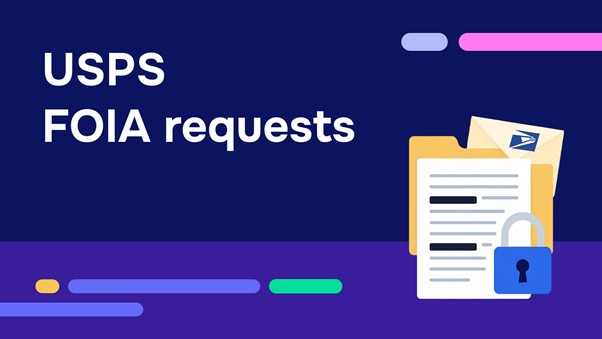
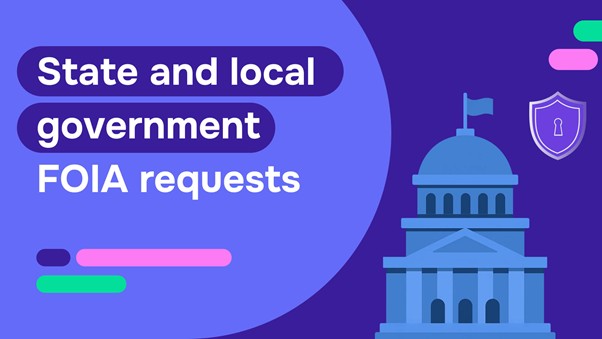
.jpg)


